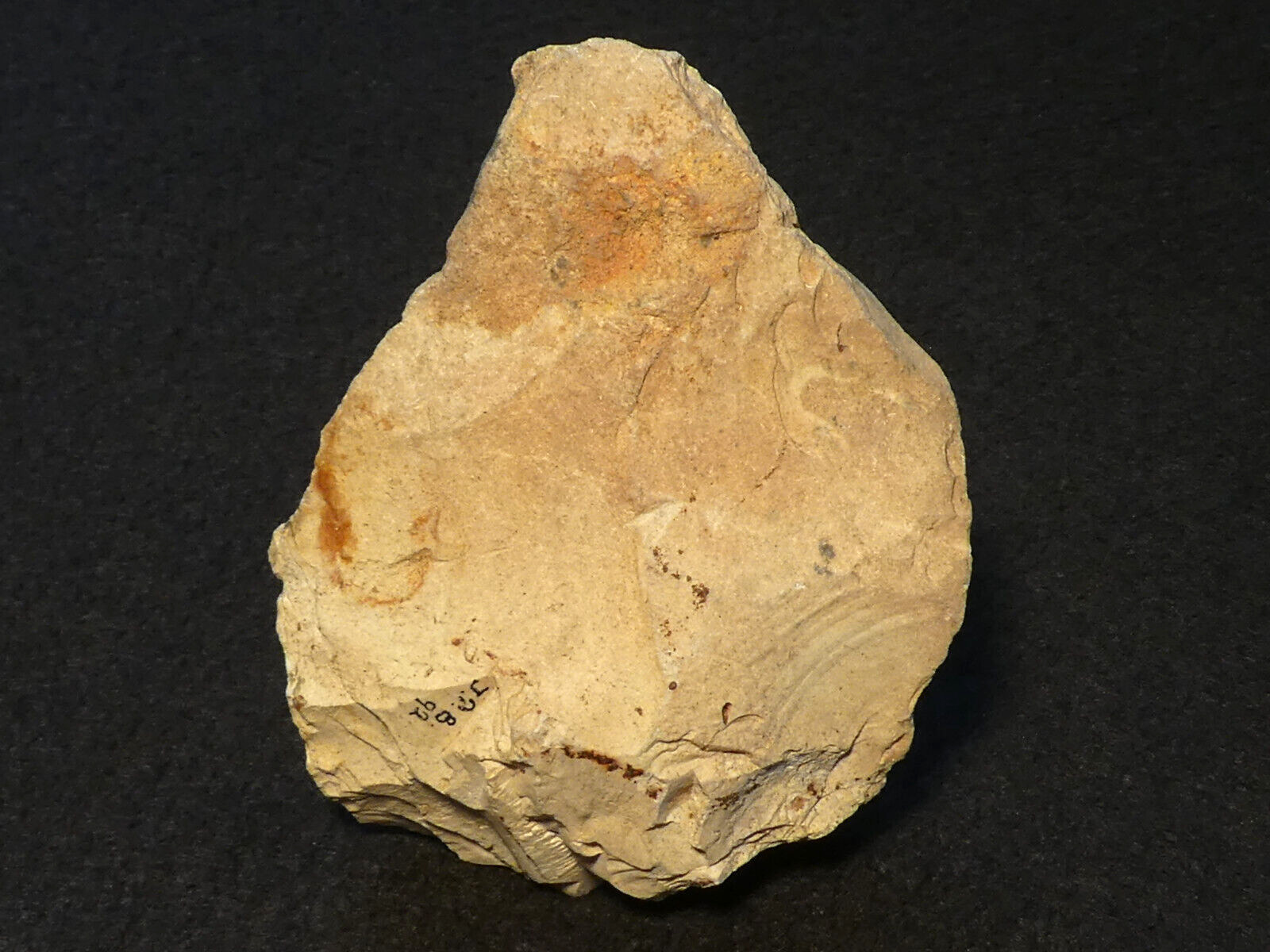PRECIOUS NEANDERTHAL HAND AX 98mm STONE AGE PALEOLITHIC ACHEULEAN FLINT SILEX For Sale

When you click on links to various merchants on this site and make a purchase, this can result in this site earning a commission. Affiliate programs and affiliations include, but are not limited to, the eBay Partner Network.
PRECIOUS NEANDERTHAL HAND AX 98mm STONE AGE PALEOLITHIC ACHEULEAN FLINT SILEX:
$69.00
Combined shipping is possible!EUROPEAN PREHISTORIC ARTIFACTS
BY PALATINA AUTHENTICITY GUARANTEED!
From the old collection Archives Prehistoric Europe!
Wonderful French Paleolithic ( Paleolithic ) hand ax.
Homo Neanderthalensis - the Neanderthal ( Neandertal ) Man.
Acheualean phase about 200.000 - 150.000 years ago.
Acheulean ( Acheuléen ) industries is the term to describe the first standardized tradition of toolmaking of Homo erectus and early Homo sapiens. Named for the type site, Saint-Acheul, in Somme département, in northern France, Acheulean tools were made of stone with good fracture characteristics, including chalcedony, jasper, and flint; in regions lacking these, quartzite might be used. During the Acheulean period, which lasted from 1.5 million to 100.000 years ago, the presence of good tool stone was probably an important determining factor in the distribution of early humans. In the later stages they learned to bring stone from distant areas and thus became freer in their choice of homesites. “Tool kits” that differ in tool types reflect the varying adaptations made by early Stone Age humans to different environments.Homo sapiens neanderthalensis is the species name given to a homo specimensthat inhabited Europe and the Middle East.In 1856 Johann Karl Fuhlrott, a teacher and amateur naturalist, first recognized the fossil called “Neanderthal man”, discovered in Neanderthal a valley near Mettmann in what is now North Rhine-Westphalia, Germany. Homo Neanderthalensis is a distinctive form of archaic Homo sapiens, with a long, flat, braincase (capacity 1200–1750 ccm), a retreating frontal, heavy brow ridge, and a projecting face with a large nose. Contrary to early reconstructions, Neanderthals were fully upright, but had stocky, muscular body build. Fossil evidence indicates Neanderthal characters evolved slowly from the Homo Heidelbergensis about 500.000 years ago, but the full set of features only occur
after 100.000 years ago as a result of adaptations to a cold climate.
There is a particular concentration of finds in W Europe,
where Neanderthals disappear ca. 33.000 years ago with the arrival
of anatomically modern humans (H. sapiens sapiens);
in SW Asia the two subspecies coexisted for c.60 000 years
(100 000–40 000 years ago).
Provenance is an old collection with finds from Western Europe.
More details will follow the artefact.
I guarantee absolutely for the authenticity.
Please view also my other sales with relics
from the European Prehistory.

Related Items:
